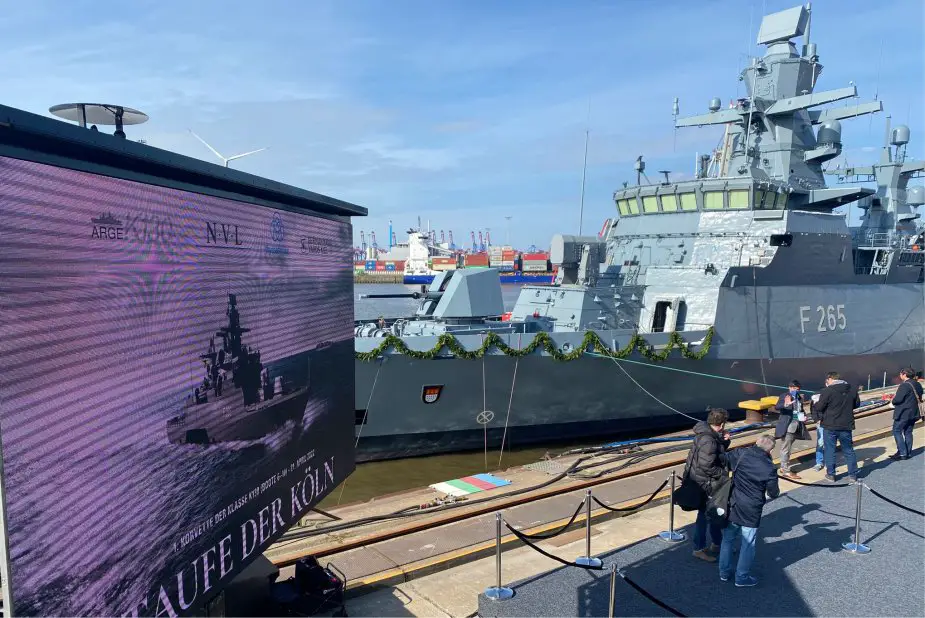According to a tweet published by the German Navy on April 21, 2022, the Navy has christened the sixth K130 Braunschweig class corvette Köln during a ceremony in Hamburg.
Follow Navy Recognition on Google News at this link
 Braunschweig class corvette Köln (Picture source: German Navy)
Braunschweig class corvette Köln (Picture source: German Navy)
The German Navy Braunschweig class corvettes (K130) were designed and built by the Class 130 Consortium led by Blohm + Voss. In October 2016 it was announced that the second batch of five more corvettes is to be procured from 2022–25.
The main task of the corvette is to be sustainable in operating areas and to demonstrate a permanent presence there. In addition to surveillance, reconnaissance, and security operations, the corvettes shall also protect and control military and civilian shipping and sea lines of communications in coastal waters.
As part of their anti-surface warfare (ASUW) capabilities, the corvettes will coordinate naval warfare means in the operating area and assume command and control of sub formations on the tactical level. During intervention operations, operational tasks will also include anti-surface operations and the engagement of unconventional surface targets, e.g. asymmetric threats on the high seas or in littoral waters.
The Braunschweig class corvette has a length of 89.12 m (292 ft 5 in), a beam of 13.28 m (43 ft 7 in), and a draft of 3.4 m (11 ft 2 in). They will reach a top speed of 26 knots (48 km/h; 30 mph).
They feature reduced radar and infrared signatures ("stealth" beyond the Sachsen-class frigates) and will be equipped with two helicopter UAVs for remote sensing.
The class will be armed with one OTO Melara 76 mm un, two Mauser Bk-27 autocannons, four RBS-15 Mk.3 anti-ship missiles, two RAM Block II launchers, and two mine racks of 34 naval mines Mk 12.



